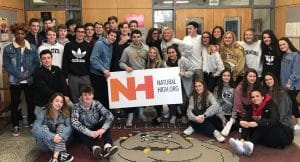If you’re a parent concerned that your child is using drugs and/or alcohol, we’ve compiled a list of the common signs of drug and alcohol use.
Only 31% of parents of 15-16-year olds believe their child had a drink in the past year, compared to the 60% of teens in that age group who reported drinking.
If your child is using alcohol and drugs, it’s a good bet he or she is doing everything possible to keep that activity hidden. But continued alcohol and drug use will affect your child’s behavior, attitudes, and even choice of friends.
According to alcoholism.about.com, the following list describes 9 signs to look for if you think that your child may be using drugs and alcohol.
1. Mood swings
Most teenagers go through normal mood swings. But look for extreme changes—one minute happy and giddy followed by withdrawal, depression, or fits of anger or rage.
2. Secrecy
Pay attention to your child’s behavior. If he or she begins to act with increased secrecy about possessions or activities or engages in subtle conversations with friends, this may be a cause for concern.
3. New Friends
If your child is using, chances are he or she will be hanging out with others with similar interests. Has your child suddenly turned away from his or her old friends? Is he or she hanging out with an older (driving age) group or with those that you suspect are using drugs?
4. Bad Performance in School
Has your child’s attitude toward school suddenly changed? Have his or her grades gone from pretty good to very bad? Has he or she been skipping classes or school altogether?
5. Physical Health
Have you noticed a change in appetite? Does your child suddenly have digestive problems? Has he or she been treated for medical conditions that might be attributed to substance abuse, like gastritis or ulcers? Have his or her sleeping patterns changed?
6. “Evidence”
Have you noticed any alcoholic beverages missing? Have you found unexplained empty containers around the house or grounds? What about the increased presence of “masking agents” such as mouthwash and breath mints, which could cover up the smell of alcohol?
7. Attitude
Has your child developed a negative attitude against anti-drug or anti-alcohol programs, materials, or literature? Has he or she developed a bad attitude toward any authority figures in his or her life? Have you found your child has generally become dishonest?
8. Little Things
Have you noticed a change in hairstyle or “fashion” choices? Has your child lost interest in tidiness in his or her room, or does he or she pay less attention to personal hygiene?
9. Overt signals
Has anyone ever told you your child is drinking or using drugs? Has your child suddenly developed the need for additional money, and for vague or unexplained reasons? Have you ever seen your child stagger, or have you noticed any slurred speech, changes in the pupils of his or her eyes, or redness or bloodshot eyes?
Keep in mind that many of these changes, alone, could be attributed to being simply a part of growing up, but if you have noticed a pattern of several of these “signals,” your child may be using alcohol or drugs.
BONUS TIP: Be proactive
Start a conversation with your child before you see the signs of drug and alcohol use. A parent can easily feel lost. How can their words possibly be effective, in the midst of so much conflicting messaging on drugs and alcohol?
Natural High cuts through the clutter, bringing an inherently uplifting and life-affirming message to the prevention of drug and alcohol abuse. Our video content encourages young people to surround themselves with positive peer influence, to believe in themselves, to set goals, to cultivate strong mentor relationships, and to develop strength and resilience that can help them live life well without drugs and alcohol.



